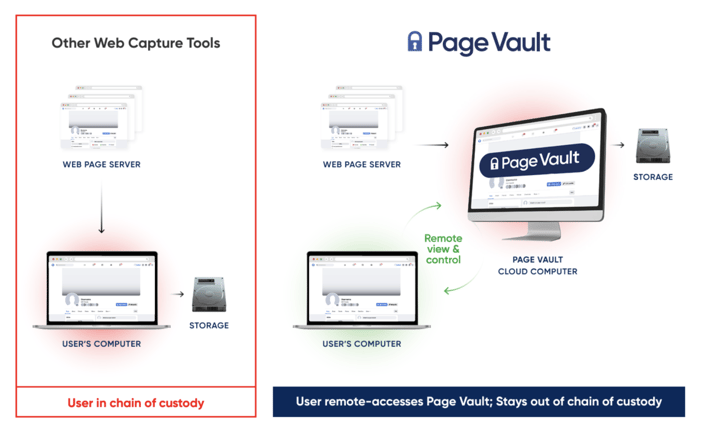The increase in online video use heightens the necessity for legal professionals to follow proper authentication requirements when using video as evidence.
Last Updated April 2024
In the rise of video use on social media, news websites, and across the internet, video platforms such as YouTube, TikTok, and others serve as vital sources of evidence. As a result, legal professionals face challenges in authenticating video content for use in court. This task requires an understanding of both technological and legal nuances.
When researching and collecting evidence for a case, a video can be a powerful tool. Video is commonly seen in opening and closing arguments, as supplemental exhibits, or even as the “smoking gun.” However, the digital landscape and its ephemeral nature creates obstacles for legal professionals seeking to use online videos as evidence. Common challenges to relying on video as evidence include:
1. Circumstantial Evidence
Circumstantial evidence can enhance the credibility of video evidence. As defined by Cornell Law Legal Information Institute:
Circumstantial evidence is indirect evidence that does not, on its face, prove a fact in issue but gives rise to a logical inference that the fact exists. Circumstantial evidence requires drawing additional reasonable inferences in order to support the claim.
The context in which a video was uploaded, including the date, time, and even accompanying social media reactions such as likes and comments, can provide valuable insights into its authenticity and relevance to the case at hand.
2. Expert Testimony
The engagement of third-party video forensics experts can help preserve, authenticate, and provide reliable expert witness testimony for cases using videos as evidence. Additionally, these experts can aid in anonymity concerns by using techniques such as voice and facial recognition to aid in identification. In today’s era of deepfakes, digital forensics experts can also help determine if videos are fake, or AI generated.
3. Maintaining Digital Chain of Custody
Properly documented chain of custody establishes that: 1) when the record was originally produced, it accurately recorded the webpage in question, and 2) the record was not subject to alteration from the point of collection until presentation in court. When legal professionals are relying on low-cost browser tools to capture video evidence themselves, this compromises the chain of custody. Whereever possible, it is recommended to stay out of the chain of custody altogether and use a third-party expert or self-authenticating software to collect online video evidence.
4. Ensure Metadata
Underlying the surface of a video is a vast amount of information that further proves its authenticity. Simple screen recordings commonly fall short in their collection of metadata. This includes information such as: date and timestamps, browser or operating system, IP addresses, users, hash values, and URLs.
Digital video evidence must be authenticated pursuant to Federal Rule of Evidence (“FRE”) 901 in order to be admissible in court. FRE 902(13) allows certain evidence regarding “an electronic process or system that produces an accurate result” to be self-authenticating through “a certification by a qualified person.” This includes evidence regarding the process for videos found online.
Due to its patented technology, Page Vault keeps the user out of the chain of custody. Therefore, Page Vault can serve as the “qualified person” to provide the required certification under FRE 902(13).

Page Vault's Chain of Custody Architecture
As the amount of online video evidence in legal cases grows, along with the challenges in verifying its authenticity, creating a strategy for its correct collection and preservation becomes essential for those in the legal field.